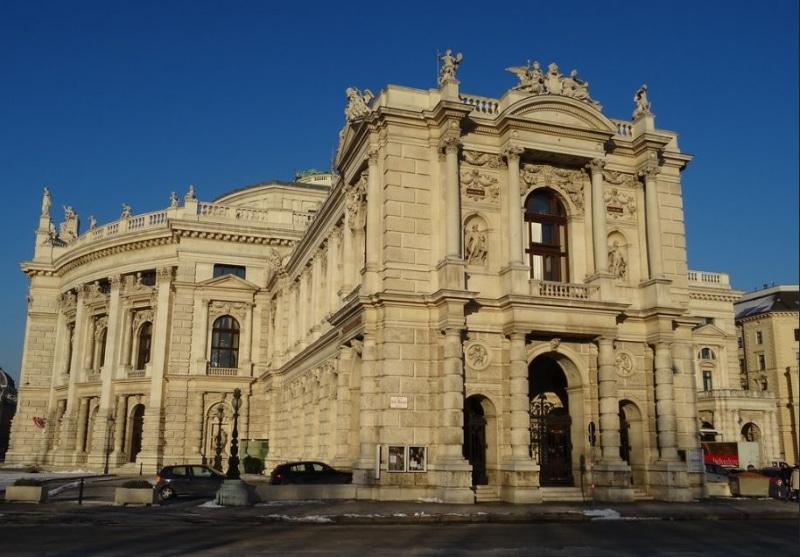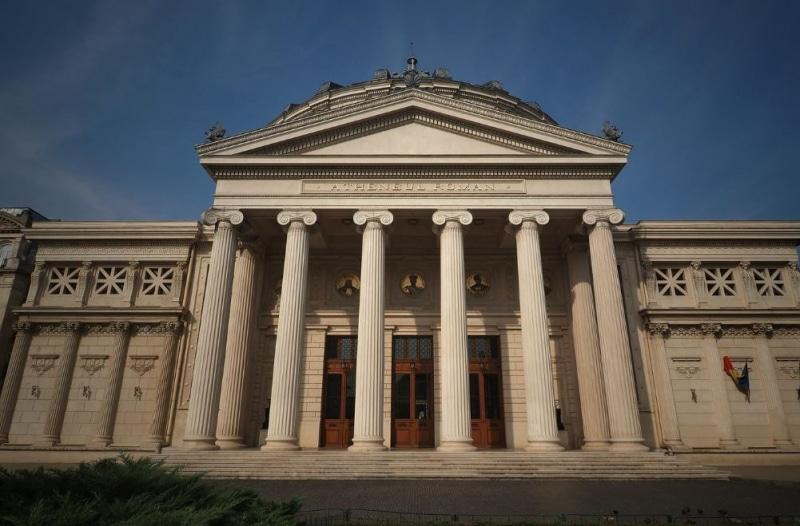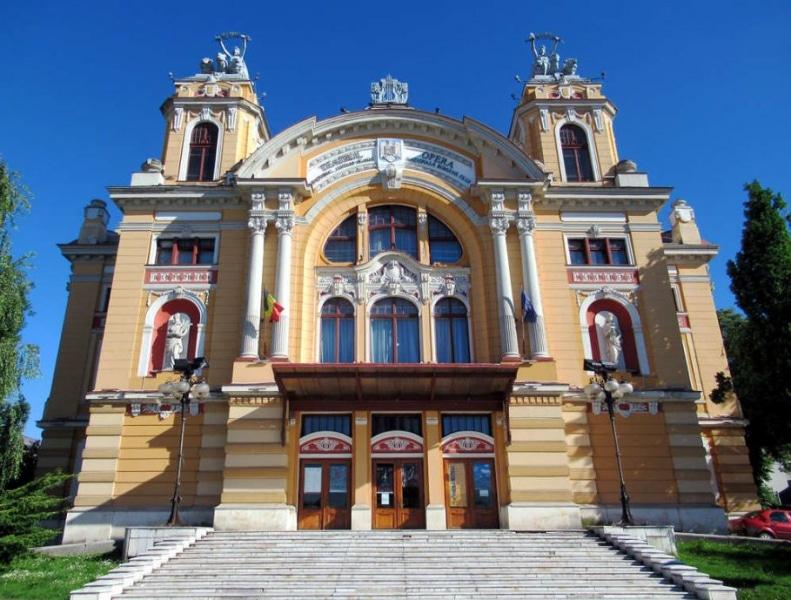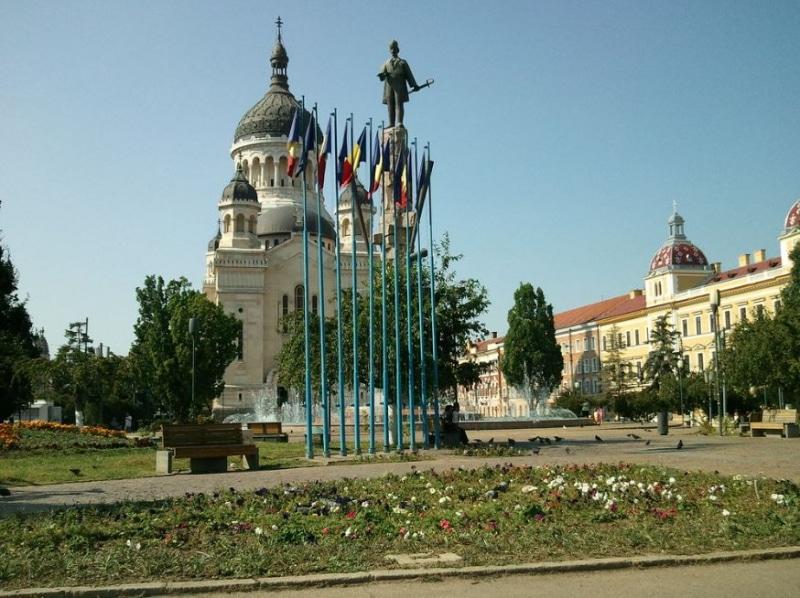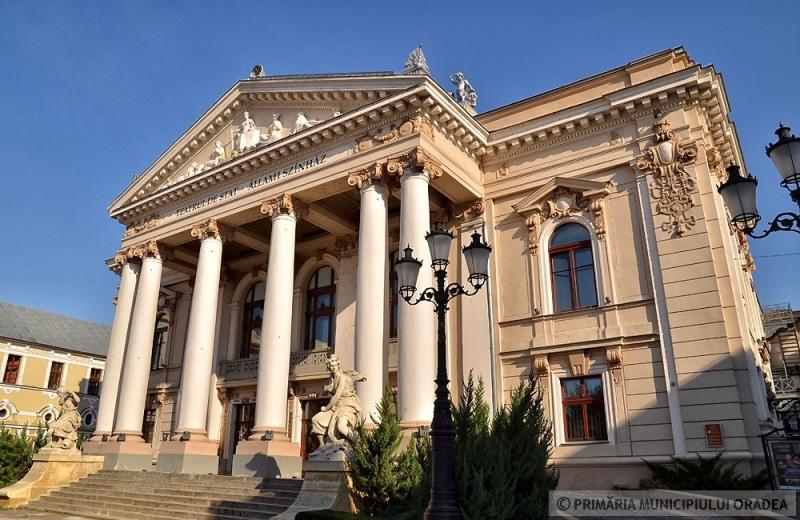Theaters, Romania
Removed from Unnamed collection
Bucharest National Opera House
Bucharest National Opera House needed headquarters since the beginning of the 19th century. The nowadays building housing the National Opera in Bucharest was designed in 1946.
The first Italian theater was opened in Bucharest in 1843 and it has to do with the National Opera, for it was opened with the opera Norma by Vincenzo Bellini, followed by the Barber of Seville by Rossini. In 1870, the composer and conductor George Stefanescu tried to persuade the authorities to build a headquarters for the Opera. Thus he launches the Opera Company in 1885 with the performance of Linda di Chamonix by Donizetti, sung in Romanian. Only in 1921, the Opera Company receives the necessary funds in order to organize itself in the new institutional order, becoming the Romanian Opera. The premiere of Lohengrin by Richard Wagner, with George Enescu conducting, was the opening performance that year.
The theater was built in classical style. The main hall ha 2200 seats, surrounded by lodges and amazing acoustics. There are four caryatids, four statues, Drama and Poetry statues, a bas-relief called Music and another one called The Dance. George Enescu’s monument is in front of the building. https://bucharest-travel.com/opera-in-bucharest/
Map
Removed from Unnamed collection
Romanian Athenaeum
Romanian Athenaeum is one of the most beautiful buildings in Bucharest and cultural center and also host for GEORGE ENESCU FESTIVAL.
In 1886, authorities bought the land where the future Athenaeum was to be built. This is how the history of the Romanian Athenaeum begins. The French architect Albert Galleron and the Romanian architects Grigore Cerchez, Alexandru Orascu, Ion Mincu and I.N. Socolescu started the project. Works began in 1886 and were finished in 1889. It was built in neoclassical style, it has Greek temple elements but also French decorations from the end of the 19th century. A circus was on the land of the nowadays Romanian Athenaeum in Bucharest. The entrance has 6 Greek columns, the dome is Baroque style, 41 meters high.
The interior of the Romanian Athenaeum in Bucharest includes exhibits rooms, concert halls and conferences halls. 12 Greek columns sustain one of the main halls, the Rotonda. 4 monumental stairs start from here, imitating Carrara marble, made by the famous architect, Carol Stork. The honour stairs also start from here. The great circular hall is 16 meters high, 28,50 meters in diameter and 784 seat capacity. There is also an ensemble of 75 meters long and 3 meters high of paintings, made in alfresco style, representing 25 scenes from Romania’s history. In 1944, during the war, the Romanian Athenaeum in Bucharest was devastated by German and American bombs but it was rebuilt in 1945. https://bucharest-travel.com/romanian-athenaeum/
Map
Removed from Unnamed collection
National Theater Lucian Blaga
The two cultural institutions were founded in 18th September 1919, as an expression of spiritual rebirth after the Great Union in 1918. The building which houses the „Lucian Blaga” National Theatre and the Romanian Opera was built between 1904 and 1906, as a seat for the Hungarian National Theatre, by the famous Viennese firm „ Fellner und Helmer”, combining stylistic elements of new-baroque and Secession. The hall has 928 setas and it is built in New-Baroque style. For decorating the lobby were used stylistic modulations inspired by Secession. The National Theatre and the Romanian Opera have been functioning there since 1919. The opening show of the National Theatre of Cluj took place on 1st and 2nd December 1919, with the plays „Se face ziua” by Zaharia Barsan and „Ovidiu” by Vasile Alecsandri. The „Eupharion” Studio of the National Theatre is specially designed for the young artists and their creative experiments. The Romanian National Opera from Cluj Napoca is the first lyrical dramatic state institution from Romania. The inaugural show took place on 25 May 1820, with the play “Aida” by G.Verdi. More than 200 titles of operas, operettas and ballets from the world repertoire have been put on scene at the Romanian Opera so far. http://www.visitclujnapoca.ro/en/atractii-turistice/best-of-cluj-napoca/the-lucian-blaga-national-theatre-and-romanian-opera.html
Map
Removed from Unnamed collection
Avram Iancu Square
On the western part of the old city walls, guarded by three bastions and gates, this square was initially a marketplace, which was going to be moved to the central square. Eventually, the marketplace was moved closer to the railroad, in the current location of Mihai Viteazul square. Thus, at the end of the 19th century and the beginning of the 20th century the walls and gates of the city were demolished, and a small park was arranged in this square.
Later, new buildings were erected here, such as the National Theater, the Orthodox Cathedral, the building of the Chamber of Commerce and Industry, in the Art Nouveau style (today, the office of the Cluj Prefecture); the building of the old “Unió” Masonic Lodge (no. 7 Avram Iancu Sq.); the building of the old military garrison (today, the building of the County School Inspectorate, also known in the oral tradition of the city as the “red building”, a name earned by the red brick walls of the building); the Palace of Justice, where the Court of Appeal and the Tribunal are housed; the EMKE Palace (Hungarian Cultural Association of Transylvania), later purchased by MÁV (Magyar Államvasútak, Hungarian State Railroads), currently the headquarters of the CFR Regional Office; the building of the Archbishopric of Vad, Feleac and Cluj, which houses the Faculty of Orthodox Theology and the building of the Protestant Theology, on the old site of the Reformed Church’s Prayer House. http://www.visitclujnapoca.ro/en/atractii-turistice/monumente-si-complexe-arhitectonice/avram-iancu-square.html
Map
Removed from Unnamed collection
The State Theatre
THE STATE THEATRE dominates Ferdinand Square with its imposing features. Situated in the center of a true architectural museum, this building in eclectic style imposes with exceptional craftsmanship. The construction, so avidly desired by the municipality of the age, was entrusted to renowned Viennese construction firm Fellner and Helmer. http://oradea.travel/en/?p=1873&nggpage=2
Map
Removed from Unnamed collection
Ioan Slavici Classical Theater
The Ioan Slavici Classical Theatre (Teatrul Clasic Ioan Slavici) is a three-story, nineteenth century, neoclassical theatre located in the city of Arad. The building was named after one of Romania’s most renowned writers, journalist, and Arad native, Ioan Slavici. The theatre has put on thousands of shows throughout the decades that have delighted and dazzled guests from both near, and afar.
The theatre’s inception took place in 1868 when Arad’s city mayor, Aztel Peter, and the baron, Béla Bánhidy, along with other city officials, decided that the city had to have a new theatre. After the decision was made they moved forward and replaced Arad’s old and outdated baroque style theatre, which had been functioning as the city’s primary theatre since 1817, with the new Ioan Slavici Classical Theatre. https://roamingromania.com/ioan-slavici-classical-theatre-arad/
Map

